Many Pacific stories go unreported, and the organisation set up to promote a Pacific presence in the New Zealand media faces an uncertain future. Michael Sergel reports.
REPORT: Samoan Language Week celebrates the language and culture of the 1 in 20 New Zealanders who trace their ancestry to the islands of Samoa, at a time when there are more Samoan stories being told from Samoan perspectives than ever before.
But there are still many stories that go unreported, and the organisation set up to promote a Pacific presence in the New Zealand media faces an uncertain future.
The Pacific Islands Media Association (PIMA) was forced to reconsider its own viability at its annual general meeting in April, due to a lack of interest in committee positions and a low attendance from its 90 members.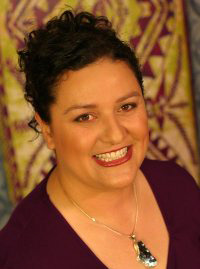 Outgoing secretary Sandra Kailahi, one of the founders of PIMA, told the meeting that a new committee would have to step forward if the organisation was to continue to exist.
Outgoing secretary Sandra Kailahi, one of the founders of PIMA, told the meeting that a new committee would have to step forward if the organisation was to continue to exist.
That interim committee has been formed, and chair Will 'Ilolahia has asked members to give PIMA “one more go” at being an effective Pacific representation in the media industry.
“We are in the process of redefining what PIMA is as an organisation, and to look to see where the organisation can best add value to those in the industry and community,” he says.
Network knowledge
The organisation’s journalism scholarships, established in partnership with the sponsors, AUT University, have drawn more people into the study of Pacific journalism, and annual networking conferences have provided Pacific journalism students and professionals with an opportunity to network and share knowledge.
'Ilolahia says that while the group has broad support, “everyone in the media is very busy”.
Because the organisation lacks resourcing and volunteers, it will focus on holding annual conferences, looking for new members, seeking funding from the Ministry of Pacific Island Affairs, and being a liaison with other media organisations.
There are also some issues that 'Ilolahia would like the organisation to pursue – around the two not always complementary aims of supporting Pacific journalists, and promoting Pacific-specific media organisations.
“Some of the Pacific Island media are underpaying their own staff, or expecting their staff to do it for the sake of representing the Pacific,” he says.
“And then there is the wider situation of corporate organisations that want to do something with the Pacific. And they would pay mainstream non-Pacific media a good advertising spend, but expect Pacific media to do it for nothing because it represents the Pacific.”
‘Out of steam’
Kailahi says the previous generation of PIMA has “run out of steam”, because of the lack of funding and resources.
She continues to support PIMA, as a way of getting more Pacific journalists and digital media workers telling more Pacific stories, and hopes it will get more funding in the future.
For Tagata Pasifika colleague John Utanga, an active founding member of the organisation and a former chair of the Pacific Media Centre, PIMA has always been about building the capacity of Pacific people in the media, with a focus on developing journalists rather than media workers.
“Journalists are content creators, who get people to think about serious economic and social issues in the community – and not just making stuff for stuff’s sake. They have the capacity to analyse, provoke thought, and shed light on issues in the community,” he says.
“But there is a recognition that some work in broadcast radio and have no formal journalism training, but are handy at picking things up and just running with it [in their langauge].”
He believes PIMA has failed “in the sense that the hope was to bring more people into journalism and there hasn’t been a core of people to carry on the work”.
“If you had more Pacific journalists working across the board, including in mainstream, you wouldn’t need a PIMA – you’d need a drinking group,” he says.
Next generation
Interim committee member Richard Pamatatau says a “little bit of fun” should be part of the recipe for the next generation of PIMA, but the organisation also needs to be an outspoken critic of the systemic misrepresentation and underrepresentation of Pasifika people.
He has criticised the media for celebrating Pasifika culture and festivals and identifying crime and diabetes as Pasifika problems, but consistently failing to tell the daily stories of Pasifika New Zealanders.
“The media is a particularly Anglo-Euro-centric beast, that serves up content that has a particular view of things,” he says.
“Some ‘mainstream’ media are serving up a particular kind of content that doesn’t serve anyone particularly well and they could do better.”
He says PIMA needs to be an outspoken critic of reporting that promotes a North-South dichotomy, a single definition of democracy, and stereotyped understandings of what it means to be Pasifika in New Zealand.
“When PIMA sees reporting that is inaccurate, or slanted in a particular direction, it needs to speak out and say no, your people need to do some work,” he says.
“Then, the public who are receiving that content are better-informed, better-educated and better able to make decisions based on accurate information rather than somebody else’s view of what it might be.”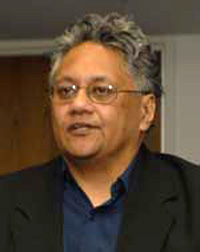 'Ilolahia says PIMA needs to influence the media from without and within – criticising media misreporting, celebrating positive representations, and campaigning for more Pasifika perspectives in the production and editing process.
'Ilolahia says PIMA needs to influence the media from without and within – criticising media misreporting, celebrating positive representations, and campaigning for more Pasifika perspectives in the production and editing process.
Pan-Pacific media
'Ilolahia admits that one of the greatest challenges that PIMA has faced to date is deciding what “Pacific Island media” means, and whether there is a need for pan-Pacific-specific media organisations.
In education and healthcare, Pasifka has emerged as an ethnic category defined by marginalisation.
But Pamatatau says the category “partitions off a particular group of people based on ethnicity” and then makes a set of assumptions about what is a diverse group of people.
In the media, Pasifika has also become a self-identity, defined in practice by cultural understandings and connections with New Zealand’s Pacific communities.
Utanga says Tagata Pasifika, like other Pacific-specific journalism, has had to adapt to evolving Pacific populations, and continues to exist because mainstream media are still failing to cover many of the issues that Pasifika people are facing.
“In the early days it helped convey feelings, concerns and information for the Pacific community trying to integrate into New Zealand. It was about information about doctors, immigration services, schools and language issues,” he says.
“But now that community has moved on and many Pasifika people are already entrenched in the urbanscapes. It is now about putting the spotlight on key social issues that affect Pasifika people.”
He accepts that pan-Pacific-specific media organisations have to be conscious of not creating “one generic community”.
Diverse communities
“The Pacific community is quite diverse, not only in language and culture, but also economically and constitutionally as well,” he says.
“The communities are at different levels of language retention, and different levels of development and education. Sometimes government likes to lump everyone into the one-boat-fits-all mode, but in fact that seldom works.”
He says language continues to divide Pacific populations, and there is an ongoing need for media to cater for specific Pasifika communities.
“It is very difficult for Samoans to understand Fijians, and for Cook Islanders to understand Tongans, and some of the communities just do things differently,” he says.
“Samoans are still the largest community in New Zealand and they still have a large Samoan-language retention rate, so there is a reason they have their own radio station.”
Pan-Polynesian media
Utanga says Pasifika New Zealanders have “a kinship with Māori, a closeness” – and 'Ilolahia says Māori media can play an important role in getting Pasifika stories told.
Julian Wilcox, head of news and current affairs at Māori Television, agrees.
“My belief is that we have a huge connectivity with Pacific audiences, with Pasifika people, not just by our shared geneology but also by our shared philosophical worldview, and because we are part of the Pacific community,” he says.
Outgoing CEO Jim Mathers previously headed the Pacific Business Trust, and Wilcox says the company has regular meetings with Pacific community leaders.
“Our communities are engaging a lot more with Pacific Island communities that we ever have before, and our stories are starting to reflect that in a number of ways.”
He says outgoing PIMA chair Iulia Leilua and former Tagata Pasifika reporter Adrian Stevenson, who both have Samoan whakapapa, bring Pacific issues to the fore as Native Affairs reporters.
|
“And we see that as just being a part of us, an extension of ourselves. The programme has a responsibility to indigenous issues as much as to Māori issues.”
Replays important
He says replays of Tagata Pasifika also play an important role in aligning Māori Television to Pacific audiences.
“It is still the leading Pacific Islands current affairs programme and it also underlines our commitment to want to maintain some kind of relationship with the Pacific community.”
John Key has expressed a strong commitment to improving outcomes for Pasifika communities. Speaking in a Pacific Media Centre report earlier this year, he identified the government’s ongoing support of Māori Television as serving both Māori and Pasifika audiences.
Wilcox says Māori Television tries to appeal to a “broad-ranging audience”, but its primary legislative requirement is to “revitalise Māori language and culture” throughout its schedule.
He says Pasifika, Pakeha, Asian and other non-Māori audiences should be served by a public broadcasting service, and neither Māori Television nor TVNZ is legislated or contracted to perform that role.
“I think there is a responsibility upon the government, and upon New Zealand as a country, to have a public broadcaster that reflects its communities,” he says.
“I think a lot of people would like to see Māori Television being the public broadcaster, because of the way that it does broadcasting, although that’s not something I can talk about.”
Pacific television
Wilcox believes the longer New Zealand continues to have no public broadcaster, the stronger the case will be for a Pacific broadcaster.
“We should have a public broadcaster that takes care of those communities and we just don’t have it at the moment. If we continue to marginalise Pacific voices, I think that leads greater impetus to the establishment of a Pacific Island broadcaster.”
He says if a Pasifika television channel was set up, “Māori Television would probably support that idea” with “collaboration and partnership”.
Wilcox says the Māori and Pasifika population will reach 40-45 percent by 2040, and PIMA and a Pacific channel should be part of that future.
“The population is browning, and the news and current affairs offerings should brown with it. If there are some issues around PIMA, that would concern me,” he says.
“Not just because of our population size, but also because of our communities, New Zealand has a responsibility to have greater Pacific Island journalism participation, greater Pacific Island representation on news and current affairs, and more stories from Pacific Island communities.”
'Ilolahia has been involved in the campaign for a Pacific channel and setting up the Kiwi TV platform, and believes the future is online.
“The way things are going, it is going to be streaming television. There is even a possibility that we won’t have TV channels in the near future,” he says.
But Kailahi says there will always be support for a Pasifika television channel.
“We have been beating that drum for a long time, and it is a long way off” she says.
“But it is something we will not give up on, just like our pioneers would not give up on having a Pacific radio station, and we have one now.”
Sefita Hao’uli, a founder of the Pacific Media Network, says any television channel would have to learn from the mistakes the network made.
It would need to have the capacity for quality content and quality journalism, without depleting the journalism capacity of existing organisations, he says.
Pacific radio
The Pacific Radio Network – which includes national music station Nui FM and Auckland talk station Radio 531pi – has been through lows and highs in the last decade.
Hao’uli says it was set up with ambition, courage, common sense, a commitment to Pasifika perspectives, and “an intimate understanding of community needs”.
But he also believes it could be more responsive to community needs and more attentive to its on-air presentation, and says the multicultural-multilingual model is both a blessing and a curse.
“It is impossible to serve each of our communities equally all the time – and each community’s experience of their language in New Zealand and in their home country is different.”
Kailahi, a network trustee, says the service plays a vital role to its listeners that other media do not provide.
“From the language programmes at night they are getting a sense of that information and connection with home in their language and their culture. And Pacific Radio News has Pacific angles, and even breaks some stories before other media,” she says.
“It is about perspectives. We all know Pacific people are at the bottom of the heap, but it is also about also looking at other issues around that and looking at why.”
She says other radio services also play an important role, such as Radio Samoa’s fluent Samoan programming.
“Some people listen to it constantly, they are getting the messages about things in New Zealand and what is happening back home, and they wouldn’t get that anywhere else on that basis.”
Community radio
In Wellington, Nui FM is rebroadcast through Wellington Community Radio, an access radio station with wide geographical reach and a long history of serving Pasifika communities.
Its broadcast programming covers most Pacific languages, and includes 38 hours of Samoan-language Capital Samoa Radio every week.
Station manager Piripi Whaanga admits that the access model is only “sustainable on the smell of an oily rag” and not a viable long-term avenue for Pasifika communities in central regions.
“Marginalised groups have to buy their airtime to prove that they have been left out of the mainstream – a shocking model for this country,” he says.
“We are dependent on policy, not protected under legislation, and can be taken away at any point. Like beneficiaries, we are constantly at the beck and call of government decisions, and keeps us in that mode of dependency.”
He has seen firsthand the difficulty in establishing Māori broadcasting, and believes local Pasifika New Zealand communities need similar support for broadcasting initiatives.
He also says local Pacific-specific access radio programmes build important “communication lines” for emergency information, demonstrated by Canterbury Plains FM during the Christchurch earthquake.
Cultural access
“That’s the role we have played in Wellington, providing access to culturally different groups from the vast Pacific block, with existing communication lines laid down in times of peace.”
In Auckland, access station Planet FM includes high Tongan language content, as well as programmes for Niuan, Cook Islander and Samoan communities.
“Whereas other stations play mostly music and advertising, Planet FM aims to provide highly-informative content, with a diversity of perspectives and no overriding editorial policy,” a spokesperson for the organisation says.
'Ilolahia says Planet FM’s Tongan breakfast programme is a testament to the growth of Pacific-specific media, the passion of Pacific journalists, and the role PIMA has played in developing Pacific journalism.
He commends the work of Kitekei'aho Tu'akalau, the host of Dateline Pacific, who studied at AUT University under an AUT-PIMA scholarship.
Print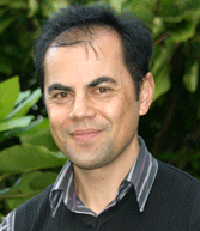 For Spasifik editor Innes Logan, there is definitely a ‘Pacific media’ in New Zealand, and he is proud to be part of it.
For Spasifik editor Innes Logan, there is definitely a ‘Pacific media’ in New Zealand, and he is proud to be part of it.
“Our website and magazine, like other newspapers and media, focus on Pacific people,” he says.
As a print publication Spasifik magazine has never received government funding, but has mixed feelings about investigative print media funding models.
He emphasises that Pacific-specific media businesses are competing for the same advertising dollar, and collaborative approaches will not always work.
“But I have always supported PIMA, and will continue to do so,” he says.
He set up Spasifik magazine to address ongoing accuracy and quality issues in print media, but now believes the New Zealand media are producing more “good quality Pacific content” than ever before.
“If you look up a newspaper like The New Zealand Herald, it appeals to a white middle class audience. It is not written specifically for a Pacific audience, and nor should it be.”
He says “there is plenty of content in there for our people”, particularly from social issues reporter Simon Collins and Pacific affairs reporter Vaimoana Tapaleao.
Pacific valued
Tapeleao, the 2010 Qantas Junior Reporter of the Year, says Pacific journalists are becoming valued in mainstream newsrooms.
“Having someone who can speak Samoan, Tongan, Niuan or any other Pacific language is a huge advantage to a newsroom,” she says.
“I had just turned 23 when the tsunami struck Samoa in 2009, but I went because I could speak the language and had a unique understanding of cultural protocol. They sent me because I could connect with people in a way that others could not.”
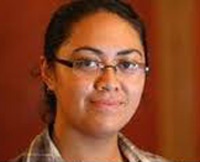 She says that Pacific journalists – people with understandings and connections to Pacific communities – are able to tell stories that other journalists may not tell.
She says that Pacific journalists – people with understandings and connections to Pacific communities – are able to tell stories that other journalists may not tell.
“There have been many occasions where speaking Samoan and having that special cultural understanding have helped me immensely in the work that I do. Having that connection with someone can build trust, particularly with older Samoan or Pasifika people,” she says.
“When they see a familiar face or hear me speaking the same language as them, they are more than happy to share and of course I get a better a story.”
The New Zealand Herald Pacific Islands reporter is optimistic about the future of Pacific journalism in New Zealand.
"I'm seeing more and more Pasifika journalists popping up in all sorts of places and that's so exciting for me. What's more exciting is the number of Pasifika kids taking up journalism as a career path,” she says.
"For me, I think simply encouraging and believing in these kids is the key to seeing more brown faces in ‘mainstream’ media. A lot of the time you hear people urging young Pasifika to study law, accounting and medicine, but you hardly ever hear journalism.
“Yet that's exactly what Pasifika peoples have been doing for centuries - telling stories.''
The future
Khing Chadwick, an AUT graduate student and aspiring journalist, says the problem with storytelling in many ‘mainstream’ media is the editorial tendency to focus on negative events.
She says covering diabetes, heart disease and obesity, but not balancing that with consistent coverage of other stories, creates negative stereotypes about Pacific people.
Chadwick believes Māori and Pacific media – which cover youth achievement and important events in the community – provide a model that other media organisations should follow.
“Pacific media outlets like Tagata Pasifika feature positive portrayals of Pacific youth, like the Prime Minister Youth Awards, rather than just bleak academic statistics, like morbid obesity rates,” she says.
“It culminates in a sense of pride and celebration within their communities, on their radio talkbacks, and on their TV shows.”
She says Pacific-specific media tend to build on the sense of communal meeting and talking that are central to most Pasifika cultures.
“They serve our communities because of their bilingual capabilities. And close-to-home community issues are addressed and church and community leaders are readily accessible so discussion usually takes place.”
Beyond stereotypes
She says journalism education is changing, with programmes like the AUT Graduate Diploma in Pacific Journalism introducing new ways to do journalism beyond “Judy Bailey and Richard Long stereotypes”.
Pamatatau leads the graduate diploma programme, and says it is about challenging Eurocentric ways of reporting that are at the root of Pacific misrepresentation.
“It is not a qualification for Pacific Islanders, but a qualification for reporting the Pacific region and everything that's in it,” he says.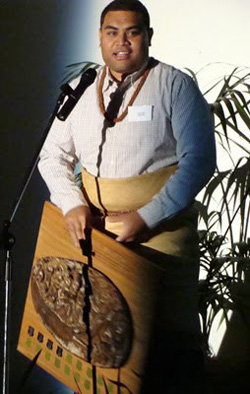 Tagata Pasifika reporter and presenter John Pulu also went through the AUT system, receiving an AUT-PIMA scholarship for his television studies major. Both he and Tapaleau were winners of the Pacific Media Centre’s Storyboard Award for diversity journalism.
Tagata Pasifika reporter and presenter John Pulu also went through the AUT system, receiving an AUT-PIMA scholarship for his television studies major. Both he and Tapaleau were winners of the Pacific Media Centre’s Storyboard Award for diversity journalism.
Pulu is grateful for the educational and networking opportunities PIMA and the PMC provided him, and is hopeful similar opportunities will be available to other aspiring journalists.
“We can repeat the success Pasifika people have had in the arts – we’ve got the talent,” he says.
“I have met many young talented Pacific people, but we just need to attract them to journalism.”
Passionate view
He is passionate about his work with Tagata Pasifika – what he calls “the only mothership of news and current affairs”.
“It should be in a better timeslot, but I am grateful that no matter what time we go to air, we have a strong, large, loyal base.”
He says Radio 513pi, Nui FM and Planet FM have been “key to protecting our language in Aotearoa and providing a link to home” – and television programmes and websites are providing other avenues to protect languages.
“I think we are bright from here. We have people in the arts, in music, behind the scenes, and more PI documentaries.”
He says story-telling is part of Pacific traditions – and The Orator, a Samoan film about a Samoan story, is an example of story-telling that Pacific-specific media need to follow.
He says he would like to see more exposure of Pasifika stories in mainstream media, and accepts that the media is not without its faults.
“The media has long been accused of giving South Auckland communities a bad wrap. It’s unfortunate that this has happened, but we need to contribute in positive ways by being in the media and bringing positive stories to the fore,” he says.
“I can see growth in brown journalists telling our own stories.”
PACIFIC LANGUAGE WEEKS
Samoa Language Week: 26 May – 1 June 2013
Cook Island Maori: 4 -10 August 2013
Tonga: 1-7 September 2013
Inaugural Tuvalu: 30 Sept -6 October 2013
Inaugural Fiji: 7-13 October 2013
Tokelau: 28 October – 3 November 2013
Niue: 13-19 October 2013


